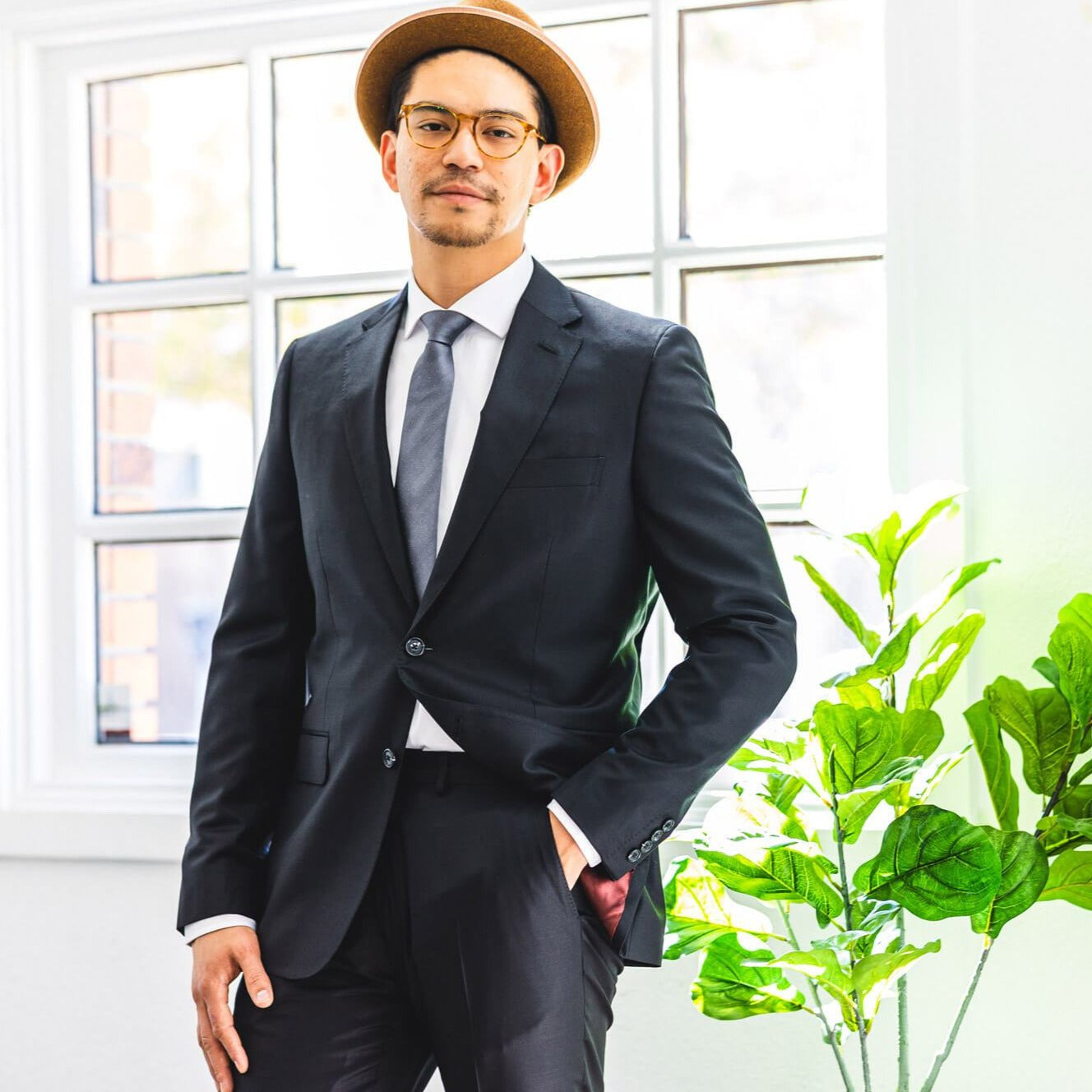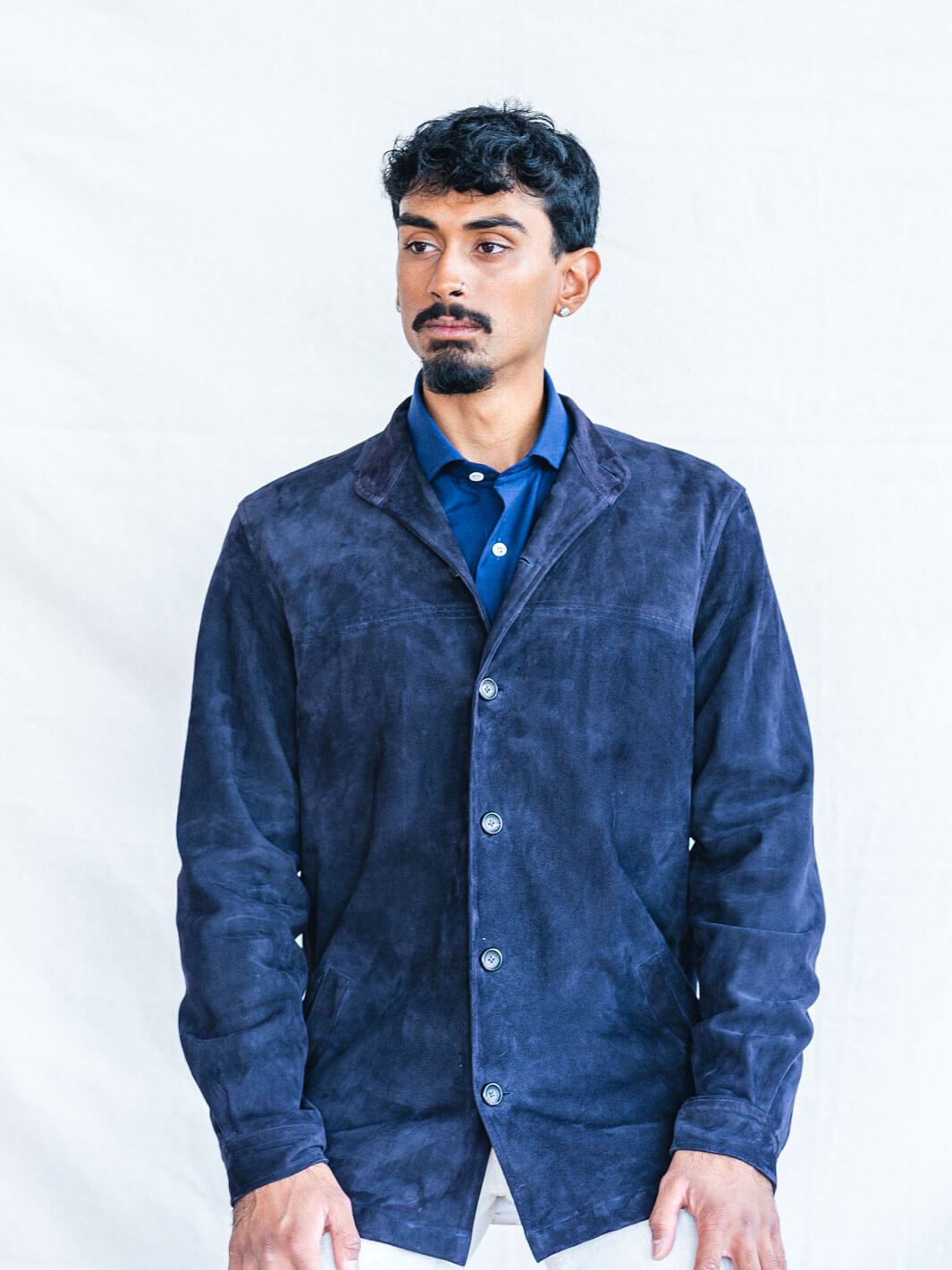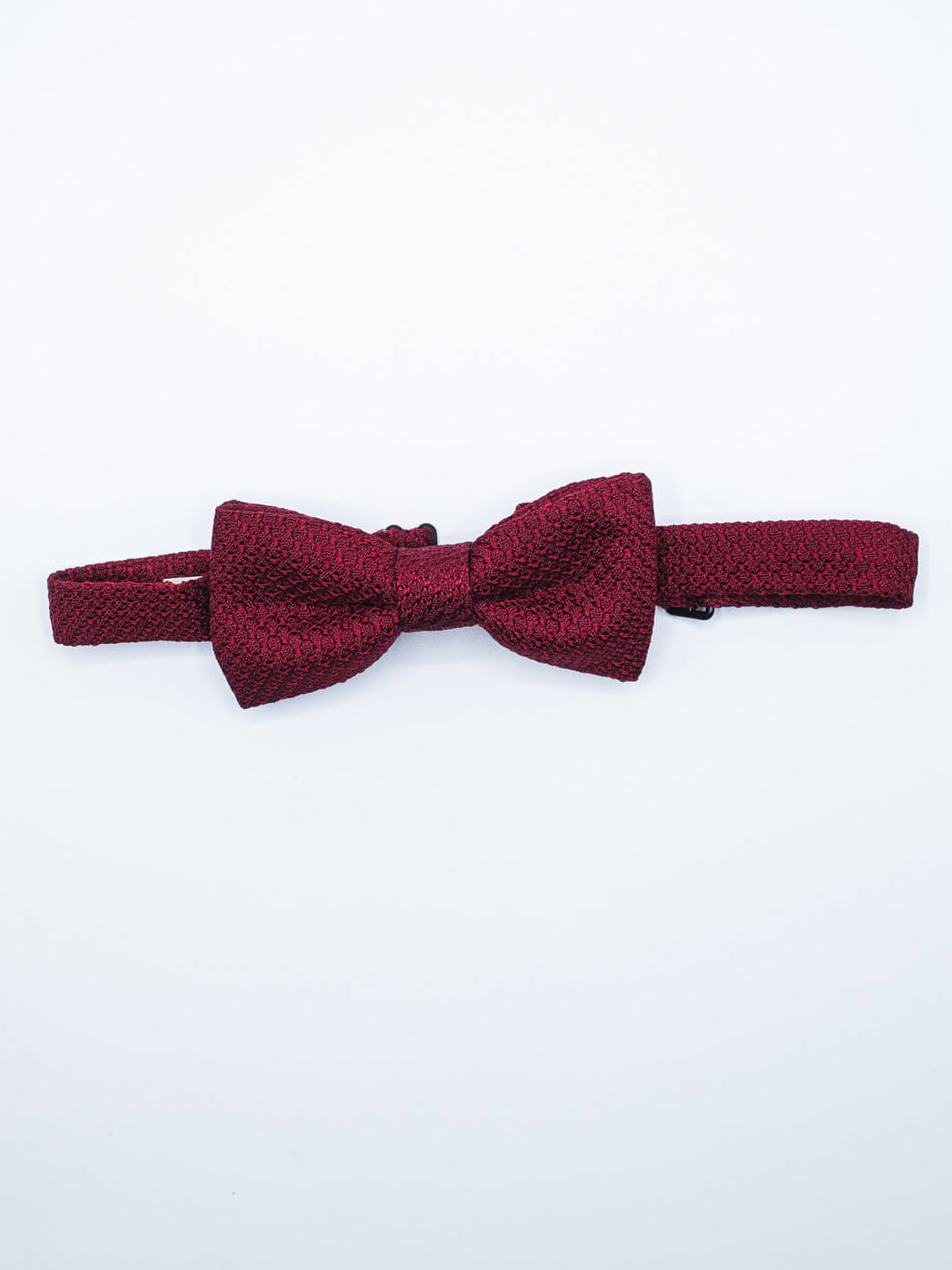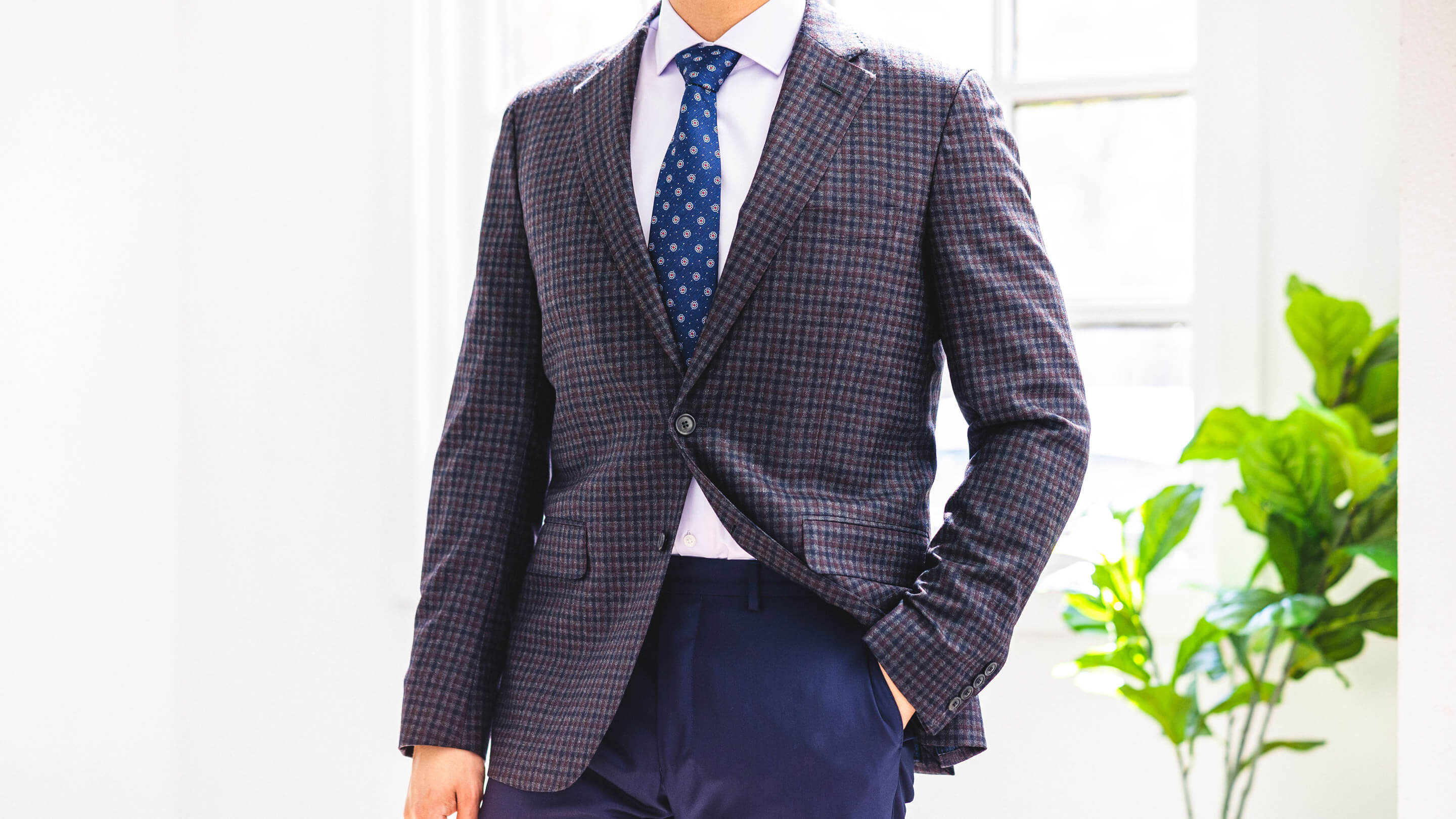These days, my friends, the word "blazer" has morphed into a grotesque, all-encompassing label for anything that even remotely resembles an odd jacket or sport coat hybrid. But let's not be fooled by this rampant misappropriation of terminology.
This is where we dive headfirst into the chaotic whirlpool of men's fashion, armed with the vital knowledge of these garments' distinct differences. For in the wild, often frenzied world of style, understanding the fine lines that separate sport coats from blazers is nothing short of essential. So, fasten your seatbelts, dear readers, as we embark on a journey to uncover the truth that lies beneath the surface of these enigmatic pieces.
-------
Shop our collection of Sport Coats and Blazers
What is an Odd Jacket?
Spezzato is the Italian term for mixing jackets from one suit with trousers from another. But suit jackets taken from a completely different suit will always be more difficult to pair with something from another outfit. Why? Because suit jackets usually only look good paired with something made for the same level of formality.
Enter the sport coat and blazer. These are single garments that aren’t sold as part of a suit. And since they’re less structured than a formal suit jacket, with less canvassing and padding, they can be mixed with other garments like jeans and chinos with relative ease. This is what we refer to as an “odd jacket.”
So, what’s the difference between a sport coat and a blazer?
Blazers
Blazers feature a particular design that harks back to traditional naval attire, specifically drawing inspiration from the reefer jacket, which serves as its historical origin. Usually it’s in a solid color like navy blue, with a smooth texture similar to a suit jacket. Because of this, a blazer is considered more formal than a sport coat. And unlike its more casual counterpart, it can come in double breasted styles as well. Traditionally, the buttons are made from brass or other metals in a contrasting color, but today you’ll find many made from material like horn or mother of pearl.

What Materials are Blazers Made From?
Your classic blazer will be made from a worsted wool cloth. This is fabric composed of long staple fibers that are combed and spun into a smooth material used in ready-wear suits and tailored garments. Woolen cloth, on the other hand, is made from short-staple fibers that retain wool’s signature fuzz. Though some blazers do contain some blend of woolen cloth for colder weather, in general, the texture you’ll find on a blazer will be smooth and less coarse than your more casual variety of sports jacket.
For colder temps, a wool flannel is a no-brainer. This type of fabric keeps you warm and cozy without looking too informal. Remember, the fuzzier the fabric, the closer it tiptoes towards the realm of the sport coat. A blazer, however, maintains just a hint of napping on its surface, a nod to tradition without venturing too far into the wild.
It’s important to note that blazers come in a variety of materials besides wool, including silk, cotton, and linen—materials well suited for summer. If you want something with a soft hand, a wool-silk-linen blend will do you wonders.
Fabric Weaves for Blazers
When it comes to blazers, there's a weave that reigns supreme, and it goes by the name of "twill"—specifically a variety of twill called “serge.” It's a weave that's seen its fair share of action in the military, known for its tough-as-nails durability and a feel so smooth it'll make you wonder why you ever wore anything else.
But what sets twill apart is that diagonal pattern it's woven in. It's like a roadmap etched onto the fabric's surface, ridges and wefts crisscrossing in a dance of texture and depth.
Now, if you're thinking of taking your blazer for a spin in a warm and sunny locale, consider the hopsack weave. This ain't your run-of-the-mill fabric either; it's worsted wool with a basket weave that'll have you feeling cool as a cucumber. Breathability? Check. Comfort? You betcha. And the best part? This summer cloth has got some backbone; it'll hold its shape like a champ even in the hottest of moments. So, whether you're on the campaign trail or just out for a night on the town, remember, my friends, the weave makes the blazer, and the blazer makes the man.
Fabric Patterns for Blazers
Historically, blazers were part of an ensemble that represented an organization or club. The colors were designed to stand out, so they were made to look bright, either in one tone or multi-colored stripes. This is where the name blazer comes from, as the color worn by one particular Cambridge club, The Lady Margaret Boat Club, was “blazing” red.
Today, blazers are much more subdued. Typically, you’ll find blazers in a conservative color like navy or brown with no stripes at all. This is because the blazer is no longer merely reserved for your Ivy League sports club. The transition occurred when sailors in the British Royal Navy adopted the blazer as their official military uniform—a double-breasted navy jacket with brass buttons. Since then, striped blazers have gone out of style, replaced by the more elegant solid colored jacket we know today.
Sport Coats
A sport coat (or sports jacket) has bold patterns and textured weaves (e.g., tweed). They were originally designed to be worn in the countryside. Less structured than a suit jacket, they have natural shoulders without padding and sometimes don’t have lining or canvassing (i.e., an “unstructured jacket”). Patch pockets are commonly used, both on the hips and the breast.

What Materials are Sport Coats Made From?
Wool is the go-to material for sport coats, as they are a great year round fabric, especially for winter and fall. But just like the blazer, sport coats can come in all kinds of natural materials like cotton that work well in spring and summer. What really distinguishes sport coats from blazers are: 1) textures that are hardier, and 2) a greater variety of colors and patterns. Enter tweed and flannel, two stalwart twill weaves crafted from the finest wool, defining this singular category.
A tweed sport coat is great for the outdoors, and was the quintessential woolen material used for hunting and leisurely pursuits. With its thick and textured coat, it would keep people insulated when out in the countryside, protecting them from wind and moisture. There are different varieties of tweed like Donegal and Shetland, which vary in pattern and texture.
Similarly, flannel is also a great choice for a sport coat. As stated earlier, sport coats have a heavier nap than blazers do, which make them a more casual garment. The benefit here is that a fuzzier fabric creates a more insulating garment. Whereas tweed is coarse in texture and more durable, flannel is usually softer and more breathable.
There are also luxury fibers like cashmere available that, believe it or not, aren’t just made for sweaters. They are exceptionally soft, but with the trade off of being fragile, so make sure to get it in a heavier cloth. For durability, you can opt for a wool-cashmere blend, and if you expect to wear it frequently, consider suede elbow patches as well. Regardless of what you choose, you should brush your jacket regularly with a soft bristled brush to maintain cashmere’s soft hand and natural luster.
Fabric Weaves for Sport Coats
For sport coats, a twill weave is the most common. Like most blazers, a diagonal rib pattern characterizes this weave, and is versatile enough to make wool into thick tweed fabric or heavy flannel. Yes, a plain weave would create a smoother feel, but would not create the depth and texture you’d want in a rugged garment, so twill is the most authentic choice.
Fabric Patterns for Sport Coats
As we said earlier, the casual nature of a sport coat allows for a higher degree of check and color variation. Houndstooth, for instance, is a classic two-toned, broken check pattern that resembles a dog’s tooth (hence the name). Black and white, or other dark and light duos, are its preferred palette, and it finds its natural habitat in the rich tapestry of tweeds.
Herringbone is another popular pattern used in sport coats. Consisting of diagonal lines that zigzag in opposite directions, this pattern creates a pronounced v-shape resembling that of a fishbone. This type of twill weave/pattern is common in tweed and flannel sport coats.
Checks are another way to make your sports jacket stand out. From large square checks (i.e., Windowpane) to smaller ones (i.e., Glen Plaid), one can always find something to make their own. Tweed in particular can come in traditional Scottish plaid (i.e., Tartan) that plays with bold colors and bands, criss-crossing to form lovely rectangular patterns.
Conclusion
So, there you have it, my fellow seekers of style. Sport coats, with their bold patterns and textured weaves—they're the rugged outlaws of the countryside, unburdened by the constraints of structure, perfect for those who live life on the edge. And then there are blazers—the polished navy knights of the sea, smooth and formal, a relic of naval history that's found its place in our modern world.
I hope you learned something about the differences between these two jackets. Just remember, the road to sartorial enlightenment is paved with odd jackets and daring choices.









